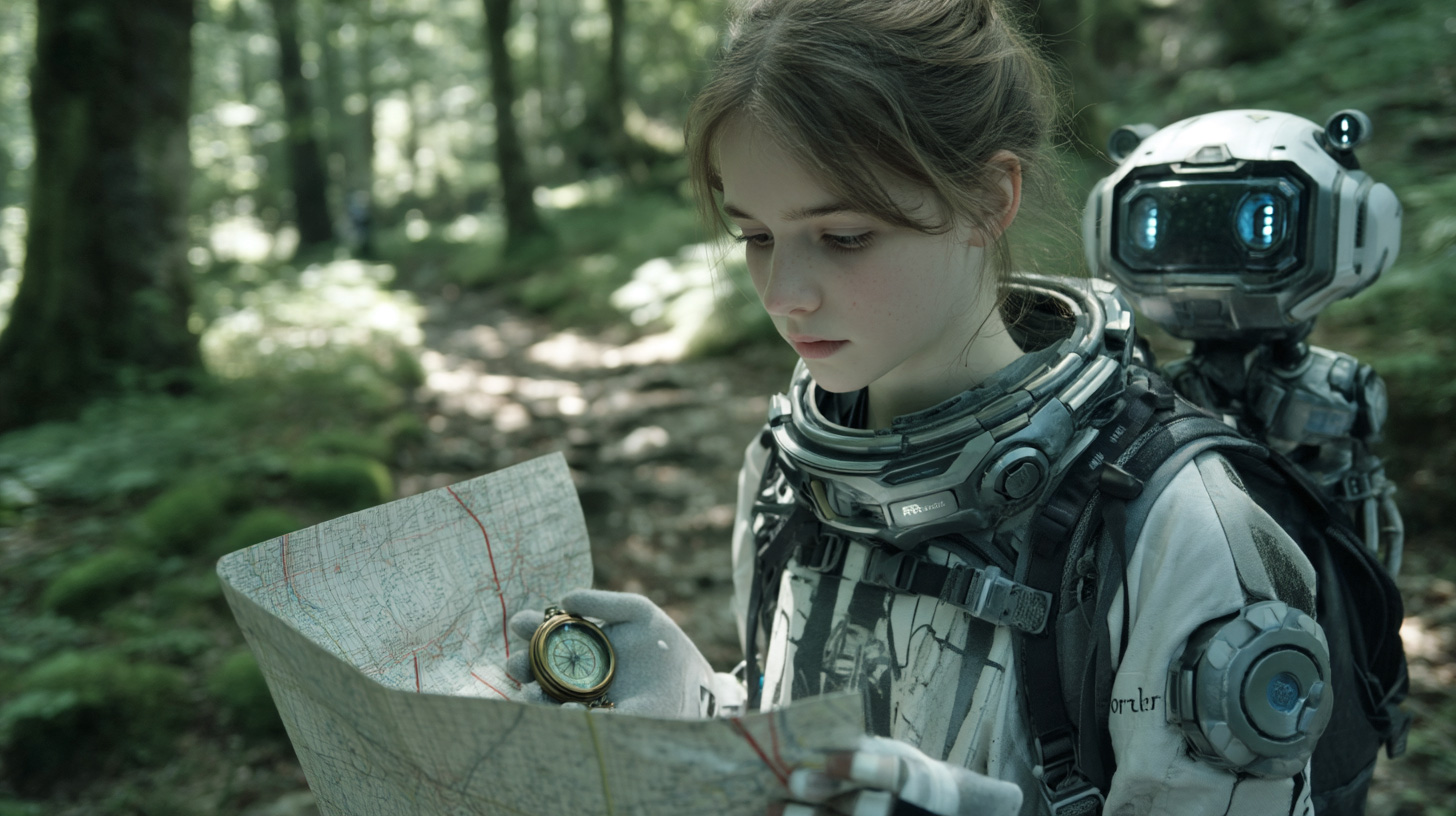You need a compass, not a map
In a world where rules change every day, you don't need roadmaps, but a compass. As predicting future is pointless, the only option is to live in now. Build a culture that nurtures both adaptation and innovation through constant experimentation, and let the ideas bubble up in your organization by being open and alert to what's happening around you.
Prologue
Maya knew her manager's reply would be polite, but a firm: "No. You know we don't have the time, nor the resources for this kind of things. What you are asking would require a full development team for at least half a year. What if your idea doesn't work? What then? You know that R&D is strictly forbidden by company policy unless preapproved by the board."
At this point she would sob. "Hey now - you can still file an R&D application to the board for the next fiscal. Maybe they'll approve it..." By that time, she knew it would already be too late. The window of opportunity gone.
So - she never asked.
Innovation then
Back in the days, any substantial innovation or advancement required careful planning and major investments. First you analysed where you are now, and then decided where you'd like to go. Next you'd craft the steps, and for each step you'd calculate the cost to determine how much you need funding. The capitalists would then tell you terms, and the process to follow to grant you the monies. Innovation required massive amount of work from all parties involved - business, engineering and finance, and take months to complete.
Things are luckily much easier now, as the cost of innovation is today near zero.
Innovation cost is near zero
Collaboration, automation, distribution and infrastructure costs have dropped dramatically since the days before the internet, and with modern tools and methods available today, the cost of experimenting on new ideas is now near zero. This has led to innovations built in the dorm rooms, few person startups, and in non-technical teams inside the organizations - and away from the old institutions that used to have the power, the money and the authority [Ito 2014].
As the innovation cost is near zero, innovators don't need to ask for permission anymore. Permissionless innovation means they just build the things they need by themselves, and be done with it. Business plans, resourcing and funding is something that happens "later", if at all. This is already happening all around us, and slowly even outside the IT industry as well [Ito 2014].
This new innovation thinking is where LeBLANC lives. Our role is to provide the tools and a method for the innovators that supports their vision and enthusiasm. Startups and citizen developers are now able to quickly iterate and publish the systems for others to use. The method cuts development time (and costs) in half, without sacrificing quality. This enables running experiments en masse:
"It's actually less risky to run a large number of experiments that a small number. If a company does only a handful of experiments a year, it may have the only one success - or none. Then failure is a big deal" [Thomke 2020]
Nothing's gonna stop us now?! Not so fast.
Biggest obstacle for innovation aren't the tools and technology, but shared behaviours, beliefs and values -- the culture. For innovation to flourish, the most important thing is an environment where employees' curiosity is nurtured, and anyone - not just R&D - can conduct and run experiments, with full management support [Thomke 2020].
On her way out, Maya was furious. Partly to the company policies, partly to the engineering team responsible for app development. The "Agile" team had become even bigger obstacle for innovation than the company policies. We are living in the 2020's, and are about to send people to Mars. How getting even the simplest application to work can take months, and cost millions using our Agile engineering team?
"I'll have none of this shit anymore..." she thought, "There has to be another way." And indeed there is, dear Maya. Hiding in plain sight, waiting for you to open your eyes just a little bit wider to see it.
The goal and the enablers
The engineering and Agile culture itself - processes, conventions and their associated metrics - become too easily the goal itself, rather than being enabler for the actual goal. “Tell me how you measure me, and I will tell you how I will behave.” If you are measured by velocity, story point burndown rate or number of deployments, you optimize the enablers — not the outcomes you should be optimizing for. When we prioritize process over purpose, innovation stalls, coordination costs rise, and teams lose sight of why they’re building software in the first place. Agile isn't broken, but mistaking motion for progress is. Tail wags the dog.
The development goal is simple: deliver the right software, as efficiently as possible, to create real business impact. This mirrors what Eliyahu Goldratt wrote in The Goal: optimizing parts of a system — like individual machines or, in our case, engineering team rituals — doesn’t optimize the whole. In fact, it often slows us down. [Goldratt 2022]
Modent tools like LeBLANC enables to focus on the goal: The system you want, as efficiently as possible to create maximum business value. This is made possible by extensive use of automation, low-code approach, and lean development method.
The beautifully simple solution emerged quite easily: "We don't need our Agile engineering department for this", Maya started to her manager, "There are tools that non-techies like me can use to build and deploy fully functioning applications by myself. After I am finished with the prototype and testing - and if you think it's a success too - just promise me a little help to get it out to production, ok?"
She couldn't hide her excitement: "What can you lose? The tools are practically free compared to the Agile development team work costs. And it wouldn't even take much time from billed projects - you know that there are quiet moments we can spare for this. With any luck, we…. Or you… will have something to show that the competitors aren't even dreaming about yet!"
Cultures eat innovation for breakfast
Microsoft's Ger Perdisatt argues that when innovation bumps up against the realpolitik of running a corporation, there is only one winner: the status quo. Conformity is built in to manage and mitigate risk: the risk of error, the risk of duplication, the risk of sub-optimal returns. Many organizations are great at articulating the size of these known risks. Where they struggle is their ability to assess the opportunity cost, the opportunities foregone by not challenging the status quo and embracing new, innovative practices, products, or services [Krasadakis 2024].
Maya knew that there was no logical reason to deny her request anymore. Yet she felt irrational fear. In addition to challenging the management, she was challenging the engineering culture as well.
The fact that Maya would be able to show them a fully working application in record time, and with minimal costs - and have the app running right before everybody's eyes - has zero value to the engineering team. Time, cost, or reaching the goal have no value. Once again, they would use the engineering veto: "It's not that we have anything against innovation. But your app is built in a wrong way, and using the wrong technology, and it doesn't fit our processes. We can't support it." With engineering, there can be only one winner: the status quo. Culture eats innovation for breakfast.
Live in now!

The world is unpredictable, often beyond any reasoning, making predictions and long running plans pointless. You need to adjust your plans almost daily, and react to outside world changes. Live in now. Compass over maps.
Define what you want to achieve, the goal you would like to reach, but leave the path to reveal itself during the journey. Let the compass point the way, innovate and adapt to changes on daily basis, and let LeBLANC provide the tools for modern innovators.
Epilogue
Maya's manager was a bit surprised, but agreed to help. "I don't see why not, let's give it a try." Maya was ecstatic. She had been given the green light, and she couldn't wait to get started. She quickly set up a meeting with her manager to discuss the details.
After a busy week, Maya demonstrated her idea to her manager using the working prototype she had built using her new tools. Small improvements were made, and the next week a showcase for the potential customers was held. Another month of marketing and productization - then the commercial launch.
At the launch party, Maya was glowing: Personally she knew that by this time the Agile development team would still be grooming their backlogs, planning Jira tickets and having tea ceremonies - with zero actual results. Her idea was now productized, and deployed to paying customers. Best of all - Maya's success had caught the management attention, who now wanted to see how this success was possible.
Maybe the cultures can be changed after all?
References
- [Ito 2014] Joi Ito: Want to innovate? Become a "now-ist".
- [Thomke 2020] Stefan Thomke: Building a culture of experimentation.
- [Krasadakis 2024] George Krasadakis: What are most frequent innovation blockers.
- [Goldratt 2022] Eliyahu Goldratt & Jeff Cox: The Goal - A Process of Ongoing Improvement.
A word from the author
I've wanted to try something different for a long time, and I've been tempted by this idea of combining a story with a blog article. I know this is not perfect, and I have a lot to learn about writing, but I still hope you enjoyed this.
Maya - our fictional little rebel - is trying to find ways to make her ideas real in the IT corporate world as a product owner. If you liked her story, maybe we'll meet her again...
Janne Hansen, 19.4.2025
LeBLANC Finland Oy


